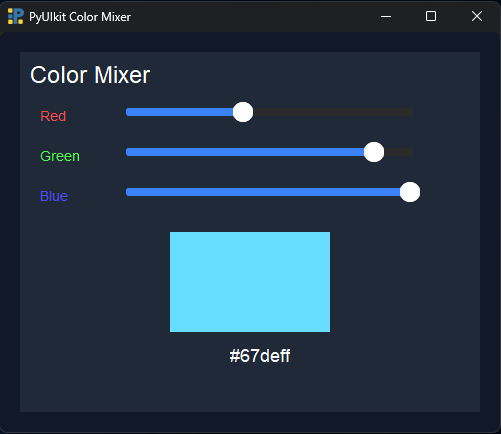NodeJS Fundamentals: lexical scope
Mastering Lexical Scope in Production JavaScript
Introduction
Imagine a complex state management system in a React application, utilizing custom hooks to encapsulate logic for a data-intensive form. A seemingly innocuous bug arises: a derived state variable within the hook unexpectedly updates based on a prop value from a parent component, leading to inconsistent form behavior and frustrating user experiences. This isn’t a problem of incorrect logic, but a misunderstanding of how closures and lexical scope interact with component re-renders.
Lexical scope is fundamental to JavaScript’s behavior, yet subtle nuances can lead to significant production issues. It’s not merely an academic concept; it directly impacts data flow, performance, security, and maintainability in large-scale applications. Browser inconsistencies, particularly regarding older engines, and the complexities introduced by bundlers and transpilers further necessitate a deep understanding. This post dives into the practical implications of lexical scope, providing actionable insights for experienced JavaScript engineers.
What is “lexical scope” in JavaScript context?
Lexical scope, also known as static scoping, defines how variable names are resolved in JavaScript. It’s determined at compile time based on where variables and functions are declared within the source code, not at runtime. A function’s lexical scope is the scope in which it was defined, not where it was called. This is crucial.
This behavior is formally defined in the ECMAScript specification (ECMA-262). Specifically, section 10.1.1 details the scope chain and how identifiers are resolved. MDN’s documentation on closures (https://developer.mozilla.org/en-US/docs/Web/JavaScript/Closures) provides a good overview, but often lacks the depth needed for production debugging.
Runtime behaviors can be affected by with statements (strongly discouraged) and eval (avoid entirely). Browser/engine compatibility is generally excellent for modern JavaScript, but older engines (e.g., Internet Explorer) may exhibit unexpected behavior with complex scoping scenarios, particularly involving nested functions and closures. The TC39 proposals related to block scoping (let/const) have significantly improved clarity and reduced ambiguity.
Practical Use Cases
- Data Encapsulation with Closures: Creating private variables and methods.
function createCounter() {
let count = 0; // Private variable
return {
increment: () => { count++; },
decrement: () => { count--; },
getValue: () => { return count; }
};
}
const counter = createCounter();
counter.increment();
console.log(counter.getValue()); // Output: 1
// count is inaccessible directly from outside the createCounter function
-
Event Handlers and
thisBinding: Capturing the correctthiscontext within event handlers.
class Button {
constructor(text) {
this.text = text;
this.button = document.createElement('button');
this.button.textContent = text;
this.button.addEventListener('click', this.handleClick.bind(this)); // Explicit binding
}
handleClick() {
console.log(`Button "${this.text}" clicked!`);
}
}
- React Custom Hooks for State Management: Encapsulating stateful logic and preserving state across re-renders.
import { useState, useCallback } from 'react';
function useCounter(initialValue = 0) {
const [count, setCount] = useState(initialValue);
const increment = useCallback(() => {
setCount(prevCount => prevCount + 1);
}, []); // useCallback prevents recreating the function on every render
const decrement = useCallback(() => {
setCount(prevCount => prevCount - 1);
}, []);
return { count, increment, decrement };
}
export default useCounter;
- Module-Level Private Variables (ES Modules): Utilizing module scope to create private variables.
// module.js
let _privateVariable = 0;
export function increment() {
_privateVariable++;
}
export function getValue() {
return _privateVariable;
}
- Currying and Partial Application: Creating specialized functions from more general ones.
function add(x) {
return function(y) {
return x + y;
};
}
const addFive = add(5);
console.log(addFive(3)); // Output: 8
Code-Level Integration
The examples above demonstrate reusable patterns. For React hooks, consider using libraries like use-hooks (https://usehooks.com/) for pre-built, optimized hooks. For module-level privacy, ES Modules are the standard. Bundlers like Webpack, Parcel, or Rollup handle module resolution and scope management. TypeScript enhances lexical scope understanding through static typing and improved code analysis.
Compatibility & Polyfills
Modern browsers (Chrome, Firefox, Safari, Edge) fully support lexical scope as defined in the ECMAScript specification. Older browsers, particularly Internet Explorer, may have inconsistencies.
-
IE11: May exhibit issues with complex closures and
let/constscoping. - V8 (Chrome/Node.js): Generally excellent support.
- SpiderMonkey (Firefox): Also excellent support.
- JavaScriptCore (Safari): Excellent support.
For legacy support, Babel is essential. Configure Babel with appropriate presets (@babel/preset-env) to transpile modern JavaScript features to older ES5 syntax. core-js provides polyfills for missing features. Feature detection using typeof or Object.hasOwn can be used to conditionally load polyfills.
yarn add --dev @babel/core @babel/preset-env core-js
Performance Considerations
Closures can introduce memory overhead because they retain access to variables from their enclosing scope, even after the enclosing function has completed. This can lead to memory leaks if closures are not carefully managed.
- Benchmark: Creating a large number of closures can significantly increase memory usage.
- Lighthouse: Monitor memory usage in Lighthouse audits.
- Profiling: Use browser DevTools to profile memory allocation and identify potential leaks.
Optimization strategies:
- Minimize Closure Scope: Only capture the necessary variables in closures.
-
useCallback(React): Memoize functions to prevent unnecessary re-creation of closures. - Avoid Unnecessary Closures: Refactor code to reduce the number of closures.
Security and Best Practices
Lexical scope can introduce security vulnerabilities if not handled carefully.
-
Prototype Pollution: Malicious code can potentially modify the prototype chain of objects, leading to unexpected behavior and security risks. Use
Object.freeze()to prevent modification of critical prototypes. -
XSS: Closures can inadvertently expose sensitive data to untrusted code if they are used to generate dynamic content without proper sanitization. Use libraries like
DOMPurifyto sanitize HTML. - Object Injection: Carefully validate and sanitize user input to prevent object injection attacks.
Use static analysis tools like ESLint with security-focused rules to identify potential vulnerabilities. Libraries like zod can be used for runtime validation of data.
Testing Strategies
- Jest/Vitest: Unit tests should verify that closures capture the correct values and behave as expected.
- Integration Tests: Test the interaction between closures and other components.
- Browser Automation (Playwright/Cypress): End-to-end tests should verify that closures function correctly in a real browser environment.
// Jest example
test('closure captures correct value', () => {
function createMultiplier(factor) {
return (number) => number * factor;
}
const double = createMultiplier(2);
expect(double(5)).toBe(10);
});
Address edge cases, such as closures capturing stale state or unexpected side effects. Use mocking to isolate closures from external dependencies.
Debugging & Observability
Common pitfalls:
- Stale Closure: A closure capturing an outdated value due to asynchronous operations or component re-renders.
- Unexpected Side Effects: A closure modifying variables in its enclosing scope in unexpected ways.
-
Incorrect
thisBinding: A closure using the wrongthiscontext.
Debugging techniques:
- Browser DevTools: Use breakpoints and step-through debugging to inspect the values of variables within closures.
-
console.table: Log the values of variables in a tabular format for easy comparison. - Source Maps: Ensure source maps are enabled to debug the original source code, not the transpiled code.
- Logging: Add logging statements to track the execution flow and the values of variables.
Common Mistakes & Anti-patterns
-
Over-reliance on
var:var‘s function scope can lead to unexpected behavior. Useletandconstfor block scoping. - Creating Excessive Closures: Unnecessary closures increase memory overhead.
- Modifying Enclosing Scope: Avoid modifying variables in the enclosing scope from within a closure unless absolutely necessary.
-
Ignoring
thisBinding: Failing to bindthiscorrectly in event handlers or methods. -
Using
eval:evalbreaks lexical scoping and introduces security risks.
Best Practices Summary
-
Prefer
letandconst: Use block scoping for clarity and predictability. - Minimize Closure Scope: Capture only the necessary variables.
-
Use
useCallback(React): Memoize functions to prevent unnecessary re-creation of closures. -
Avoid
eval: Never useeval. - Sanitize User Input: Prevent security vulnerabilities.
- Test Thoroughly: Write unit, integration, and end-to-end tests.
- Use Static Analysis: Identify potential vulnerabilities and code quality issues.
-
Understand
thisBinding: Explicitly bindthiswhen necessary. - Document Closures: Clearly document the purpose and behavior of closures.
- Profile Memory Usage: Monitor memory usage to identify potential leaks.
Conclusion
Mastering lexical scope is crucial for building robust, maintainable, and secure JavaScript applications. By understanding its nuances and applying best practices, developers can avoid common pitfalls and create code that is both efficient and reliable. Implement these techniques in your production code, refactor legacy code to leverage modern scoping features, and integrate static analysis tools into your CI/CD pipeline to ensure consistent code quality. The investment in understanding lexical scope will pay dividends in reduced debugging time, improved performance, and a more secure application.


